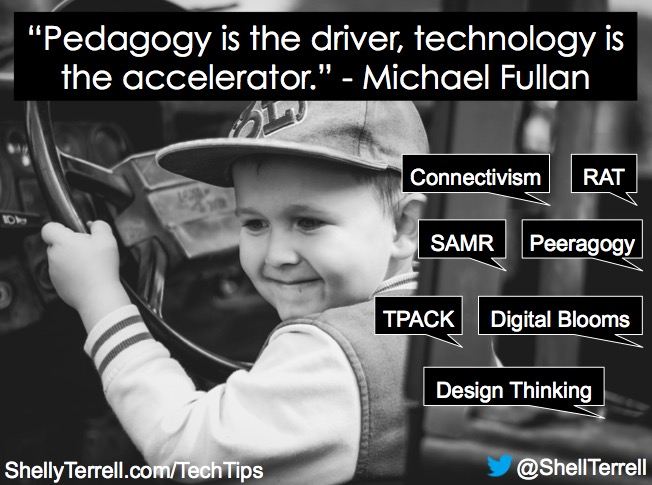While pursuing our teaching degrees we were introduced to various learning theorists and their insights about how people learn best. Some familiar names, included Piaget, Bandura, Vygotsky, and Gardner. Although understanding these theories is still important, we also need to become familiar with theories, models, and approaches, which provide us insight on how technology, social media, and the Internet impact our learning. Digital learning theories and approaches, such as RAT, SAMR, TPACK, Digital Blooms, Connectivism, Design Thinking and Peeragogy, help teachers develop curricula that gets students to use technology to research, curate, annotate, create, innovate, problem-solve, collaborate, campaign, reform and think critically. These are skills I outline in my book, Hacking Digital Learning Strategies with EdTech Missions. Digital learning approaches consider what students are currently doing online and help us design curricula to help students gain the digital skills they need to thrive in a digitally connected world. Below are some useful links to discover more about these approaches. Another approach you might be interested is Game Design and Gamification. We are currently learning about digital learning models and approaches in the free Goal-Minded Teacher (#EduGoalsMOOC) online course, which you can still join.
Get your copy of Hacking Digital Learning, The 30 Goals Challenge, or Learning to Go. Ask me about training your teachers, [email protected]!

Resources
- Connectivism: A learning theory for the digital age by George Siemens
- What is RAT? by developer, Dr. Joan Hughes
- SAMR and Digital Blooms resources by Kathy Schrock
- Bloom’s Digital Taxonomy by Andrew Churches! Download the PDFs and resources now, because Wikispaces is closing and this page will no longer exist.
- The Peeragogy Handbook with founder Howard Rheingold
- The TPACK Framework
- Design thinking is a process for creative problem solving
Challenge: Explore one of these digital learning theories to see how you can make at least one change to enhance the way you integrate technology.




